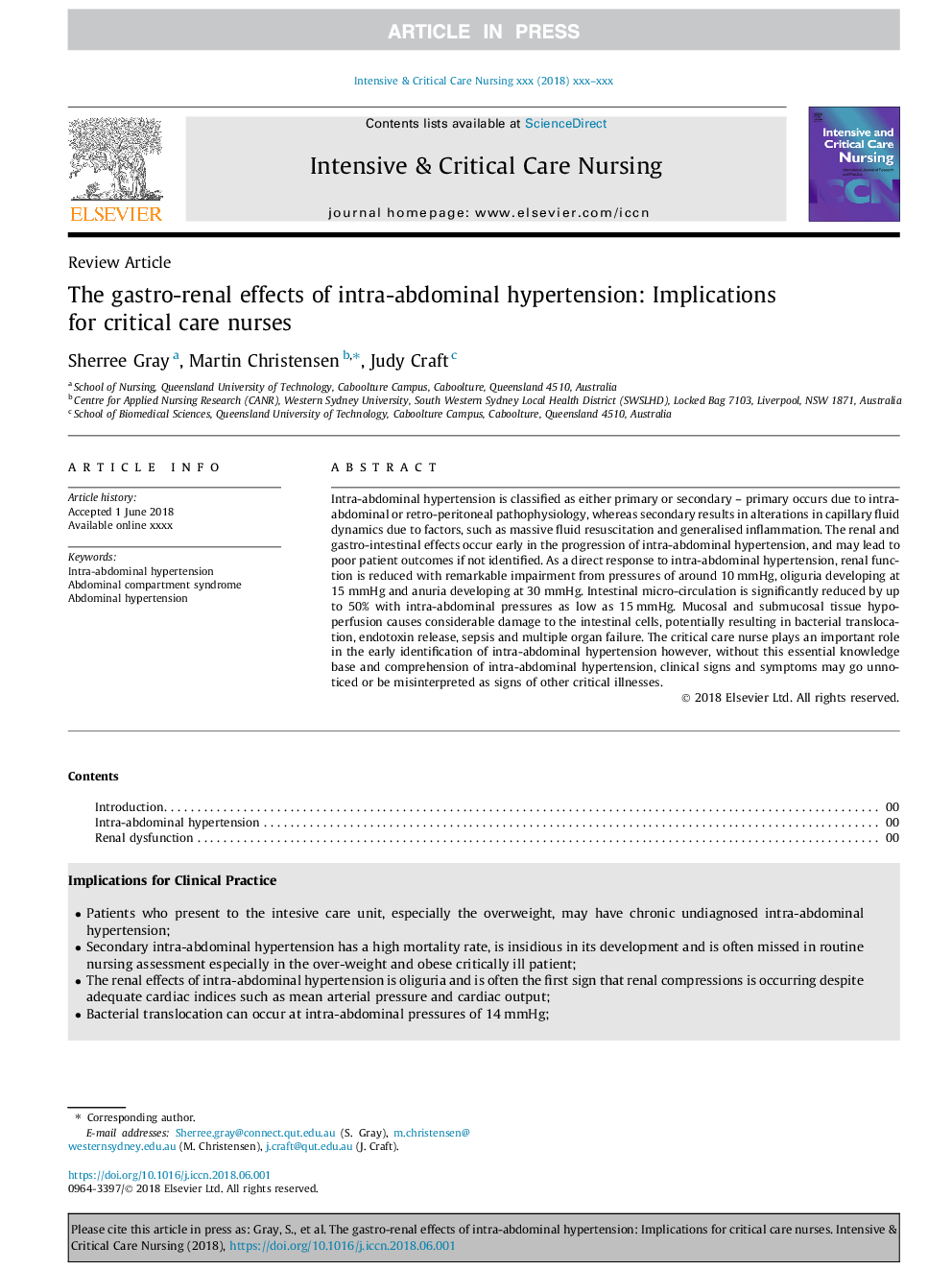| Article ID | Journal | Published Year | Pages | File Type |
|---|---|---|---|---|
| 8962538 | Intensive and Critical Care Nursing | 2018 | 6 Pages |
Abstract
Intra-abdominal hypertension is classified as either primary or secondary - primary occurs due to intra-abdominal or retro-peritoneal pathophysiology, whereas secondary results in alterations in capillary fluid dynamics due to factors, such as massive fluid resuscitation and generalised inflammation. The renal and gastro-intestinal effects occur early in the progression of intra-abdominal hypertension, and may lead to poor patient outcomes if not identified. As a direct response to intra-abdominal hypertension, renal function is reduced with remarkable impairment from pressures of around 10â¯mmHg, oliguria developing at 15â¯mmHg and anuria developing at 30â¯mmHg. Intestinal micro-circulation is significantly reduced by up to 50% with intra-abdominal pressures as low as 15â¯mmHg. Mucosal and submucosal tissue hypo-perfusion causes considerable damage to the intestinal cells, potentially resulting in bacterial translocation, endotoxin release, sepsis and multiple organ failure. The critical care nurse plays an important role in the early identification of intra-abdominal hypertension however, without this essential knowledge base and comprehension of intra-abdominal hypertension, clinical signs and symptoms may go unnoticed or be misinterpreted as signs of other critical illnesses.
Related Topics
Health Sciences
Medicine and Dentistry
Anesthesiology and Pain Medicine
Authors
Sherree Gray, Martin Christensen, Judy Craft,
